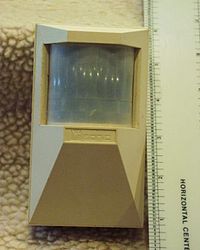
Photo from wikipedia
Abstract Synthesis and characterization of enzyme mimics with characteristic stability and high catalytic efficiency is an interesting field for researchers. Especially, with the development of nanoscience and introducing of Fe3O4… Click to show full abstract
Abstract Synthesis and characterization of enzyme mimics with characteristic stability and high catalytic efficiency is an interesting field for researchers. Especially, with the development of nanoscience and introducing of Fe3O4 magnetic nanoparticles as peroxidase mimics in 2007, various nanomaterials such as noble metals, metal oxides, and carbon materials were introduced as enzyme mimics (nanozymes). Various nanomaterials exhibit peroxidase-like activity, hence, most of the nanozymes are peroxidase mimetics. Although the nanozyme based sensors were previously classified, the classifications have been focused on the type of nanozyme action. Therefore, the nanozyme based sensors were classified as peroxidase, hydrolase, and urease mimic-based sensors. However, heretofore, these sensors are not classified based on the detection mechanism and principles of system design. The aim of this review is the focus on the peroxidase mimic based colorimetric sensors as the most common nanozyme-based sensors and their classification based on principles of sensor design and review of the detection mechanism of the current mimic peroxidase based sensors. Moreover, some current challenges and future developments in this field are discussed.
Journal Title: Chinese Journal of Chemical Engineering
Year Published: 2020
Link to full text (if available)
Share on Social Media: Sign Up to like & get
recommendations!